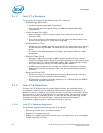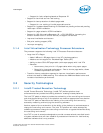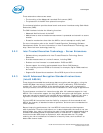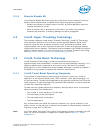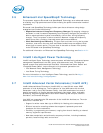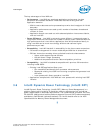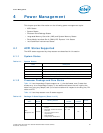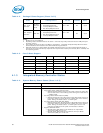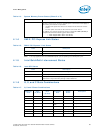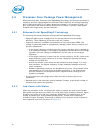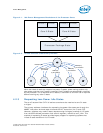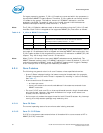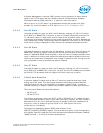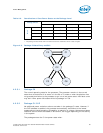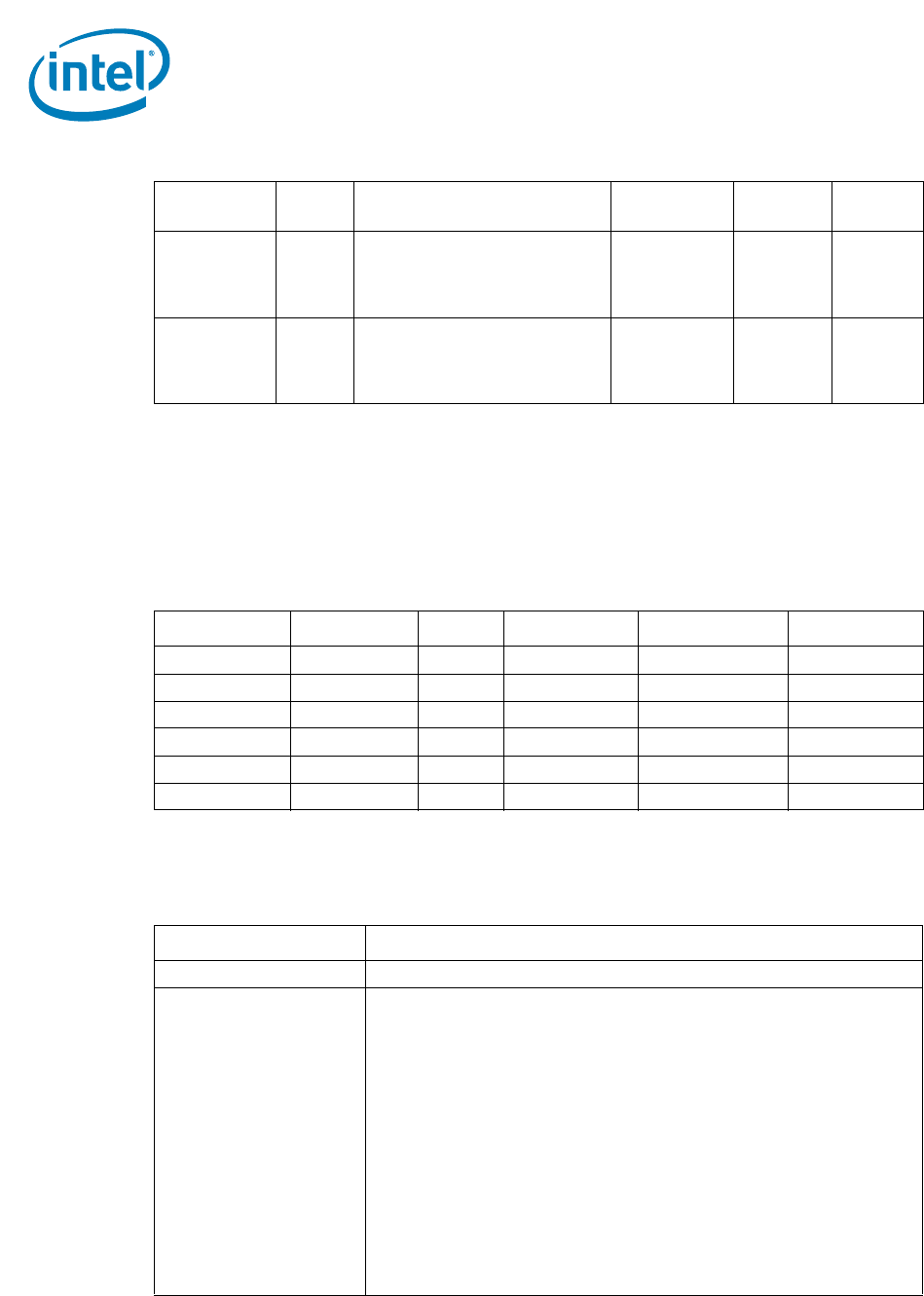
Power Management
88 Intel® Xeon® Processor E5-1600/E5-2600/E5-4600 Product Families
Datasheet Volume One
Notes:
1. Package C7 is not supported.
2. All package states are defined to be "E" states - such that they always exit back into the LFM point upon
execution resume
3. The mapping of actions for PC3, and PC6 are suggestions - microcode will dynamically determine which
actions should be taken based on the desired exit latency parameters.
4. CC3/CC6 will all use a voltage below the VccMin operational point; The exact voltage selected will be a
function of the snoop and interrupt response time requirements made by the devices (PCIe* and DMI) and
the operating system.
4.1.3 Integrated Memory Controller States
PC3 - Light
Retention
at least
one Core
in C3
•Core C-state
• Snoop Response Time
• Interrupt Response Time
• Non Snoop Response Time
Vcc = retention
PLL = OFF
No 2,3,4
PC6 - Deeper
Retention
CC6-CC7
•LLC ways open
• Snoop Response Time
• Non Snoop Response Time
• Interrupt Response Time
Vcc = retention
PLL = OFF
No 2,3,4
Table 4-2. Package C-State Support (Sheet 2 of 2)
Package C-
State
Core
States
Limiting Factors
Retention and
PLL-Off
LLC Fully
Flushed
Notes
1
Table 4-3. Core C-State Support
Core C-State Global Clock PLL L1/L2 Cache Core VCC Context
CC0 Running On Coherent Active Maintained
CC1 Stopped On Coherent Active Maintained
CC1E Stopped On Coherent Request LFM Maintained
CC3 Stopped On Flushed to LLC Request Retention Maintained
CC6 Stopped Off Flushed to LLC Power Gate Flushed to LLC
CC7 Stopped Off Flushed to LLC Power Gate Flushed to LLC
Table 4-4. System Memory Power States (Sheet 1 of 2)
State Description
Power Up/Normal Operation CKE asserted. Active Mode, highest power consumption.
CKE Power Down Opportunistic, per rank control after idle time:
• Active Power Down (APD) (default mode)
— CKE de-asserted. Power savings in this mode, relative to active idle
state is about 55% of the memory power. Exiting this mode takes 3
– 5 DCLK cycles.
• Pre-charge Power Down Fast Exit (PPDF)
— CKE de-asserted. DLL-On. Also known as Fast CKE. Power savings in
this mode, relative to active idle state is about 60% of the memory
power. Exiting this mode takes 3 – 5 DCLK cycles.
• Pre-charge Power Down Slow Exit (PPDS)
— CKE de-asserted. DLL-Off. Also known as Slow CKE. Power savings in
this mode, relative to active idle state is about 87% of the memory
power. Exiting this mode takes 3 – 5 DCLK cycles until the first
command is allowed and 16 cycles until first data is allowed.
• Register CKE Power Down:
— IBT-ON mode: Both CKE’s are de-asserted, the Input Buffer
Terminators (IBTs) are left “on”.
— IBT-OFF mode: Both CKE’s are de-asserted, the Input Buffer
Terminators (IBTs) are turned “off”.



